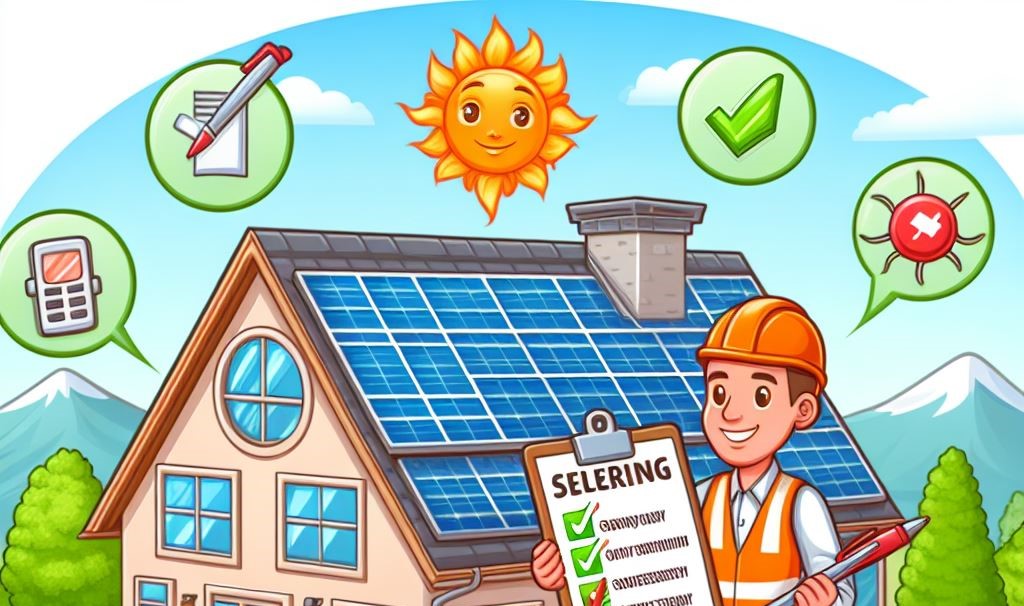This comprehensive guide serves as your roadmap to look at solar objectively. We’ll delve into critical aspects, including assessing your home’s suitability for solar panels, navigating the incentives, and maximizing the potential of your solar investment.
Is your home right for solar?
Going solar isn’t a one-size-fits-all solution. Before looking forward, it’s important to assess your home’s suitability for solar panels. Several factors, including your location, tree cover, roof condition, and roof pitch can significantly impact the financial viability of your solar investment. Start by asking yourself these key questions:
- Is my roof in good condition?
-
This is important because removing and reinstalling panels can get expensive! It is best to get any roof work done before switching to solar. Look for missing/damaged shingles, leaks, and damaged flashing.
-
Don’t know? Reach out to us and we can help find a roofer that will come out and help ascertain if roof work is necessary!
-
-
Do I receive sufficient sunlight?
-
You might think this is easy to guess,but the sun’s path changes throughout the year, making accurate estimations difficult. Instead of guesswork, consider scheduling a presentation with us. We use satellite modeling software to precisely measure your roof’s irradiance (a measure of how much sun your roof gets).
-
-
Is a rooftop installation the best option?
-
While rooftop installations are the most common, consider alternative options if your roof isn’t ideal. Pole or ground-mounted systems offer greater flexibility in positioning panels for optimal sun exposure, potentially leading to increased efficiency. Though they come with slightly higher upfront costs due to additional permitting and materials, the long-term efficiency gains can be significant.
-
What size should your system be?
You may have noticed that solar systems differ greatly in size. This is because each system is usually tailored to meet the needs of the homeowner. To ascertain your electrical usage, solar companies usually collect your electric bill, as there is typically a monthly breakdown of exactly how much electricity you use, broken down into kilowatt hours (kWh). This provides a valuable baseline, but does it accurately reflect your future needs?
-
Do you have any plans for home improvement efficiency upgrades?
-
We strongly recommend considering energy-saving renovations, such as installing energy-efficient appliances or upgrading insulation. These upgrades can significantly reduce your overall energy consumption, influencing your system size.
-
-
Any plans for an EV charger?
-
The United States Electric Vehicle market is expected to reach sales of 2.46 million vehicles in 2028. With the addition of an electric vehicle, you will use much more electricity at your home. Make sure to let the designer know you may be thinking about purchasing an EV, as you may want to increase your system size.
-
-
How many people will live in your home for the next 25 years?
-
The number of residents directly impacts energy consumption. A growing family may require a larger system, while empty nesters might benefit from a smaller one.
-
-
Are other home projects on the horizon?
-
Consider any projects that could affect your energy needs, such as adding a pool, hot tub, or finishing a basement. These additions will require adjustments to your system size for optimal performance.
-
Can you take advantage of the incentives?
Going solar offers a wealth of benefits, but maximizing your return on investment requires leveraging available incentives. Here’s a breakdown of key government programs that can significantly reduce your upfront costs and boost your long-term savings:
-
30% Federal Investment Tax Credit (ITC)
-
This widely-known incentive allows you to deduct 30% of the cost of your solar system from your federal income taxes.
-
-
Residential Clean Energy Rebate Program
-
Maryland homeowners with systems larger than 1 kW and installed at their primary residence qualify for a $1,000 rebate.
-
-
Solar Renewable Energy Certificates (SRECs)
-
You earn SRECs based on the clean energy your system generates. These certificates can be sold to utilities, generating additional income. Currently, one SREC (equivalent to 1,000 kWh produced) sells for $60/MWh. For instance, a system producing 17,000 kWh would bring in an additional $1,020 annually!
-
-
Property Tax Incentives
-
Certain counties in Maryland, including Prince George’s, Harford, and Anne Arundel, offer property tax incentives for solar installations. Explore your specific county’s program to understand potential benefits.
-
At Energy Select, we understand the potential confusion or ambiguity involved in transitioning to solar power. We’re here to navigate the journey with you, offering a transparent and streamlined process.
Our experienced team will analyze your roof’s efficiency, assess your energy needs, and design a customized solar system optimized for your specific requirements. We’ll also guide you through the available incentives, ensuring you maximize your financial benefits.
With us, going solar is a seamless and hassle-free experience. We take care of every detail, from initial consultation to system installation and ongoing support.
Schedule a free presentation here and start producing your own power!


